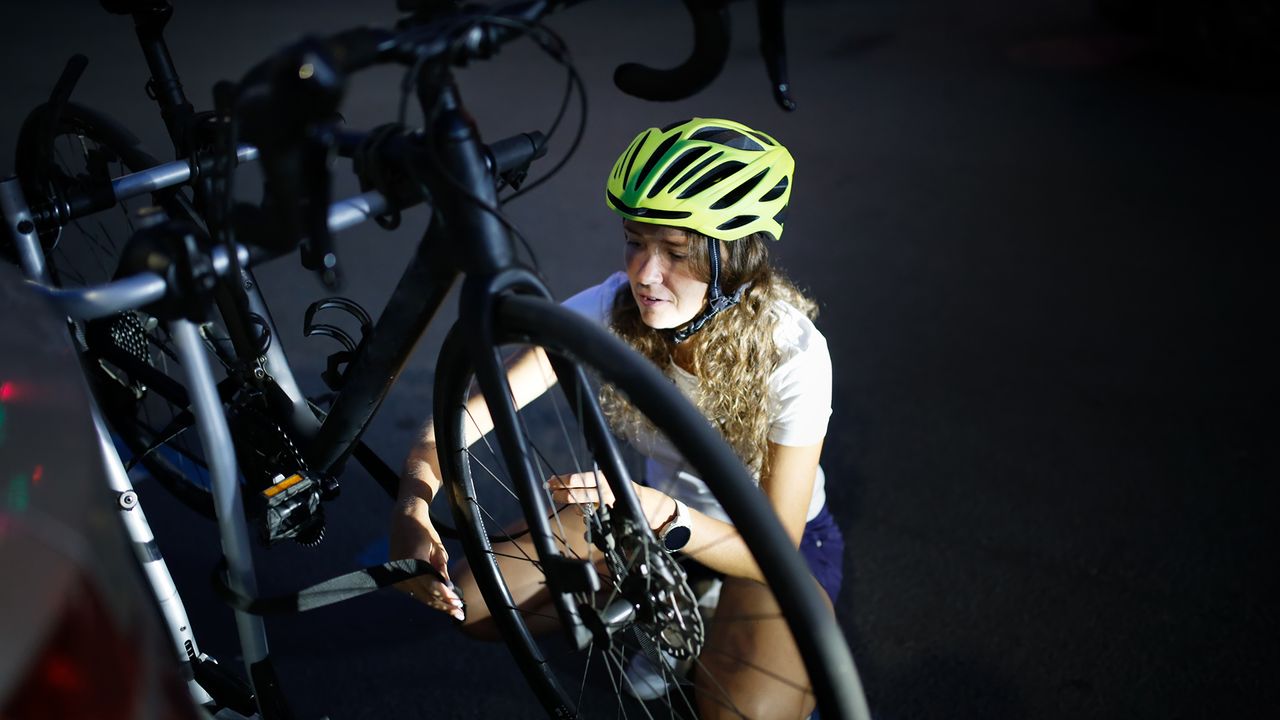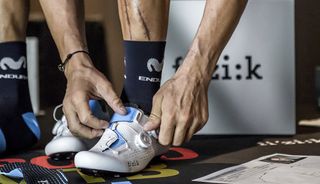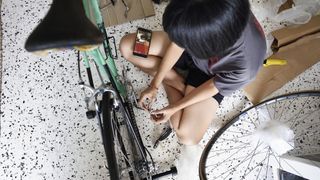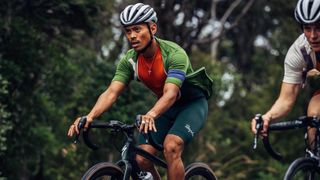

When investing in a new road bike, once you’ve decided on the model that ticks the boxes in terms of cost and componentry, the final choice before handing over your hard-earned cash is size. While this might seem straightforward – most brands offer a suggested size based on height (and sometimes inside leg measurements) – it’s not always clear cut. One size will suit a range of heights, and there is often an overlap between different sizes – and that’s before you consider that your own dimensions (such as leg-to-torso ratio) might not match the generic sizes offered.
To ensure you buy the most suitable bike, it’s worth at least sitting on one in a bike shop before you buy, while to get a precise answer, it might be worth going for a bike fit. The cost might seem like an unnecessary expense in addition to what you’re forking out for a new bike, but it’s the only way to guarantee that you’re definitely going to be going home with the correct-sized steed.
But if you already own a bike and want to get it to fit like a glove, Pearson Cycle’s head of bike fit, Nas Karimi, has shared his advice to get it set up correctly.
Make sure your shoe is the right size
Before you break out the Allen keys, the first thing to look at is your cycling shoes – particularly if you ride wearing cycling shoes with clipless cleats. Your foot feels the full force of your pedal stroke and transfers the power from your legs to the crank arms, so an incorrectly sized shoe can reduce pedalling efficiency, power transfer, and control and cause discomfort on longer rides.
“A lot of people are unaware if the shoe is too big because they're not getting so much sensitivity from a shoe, but a visual symptom for me is I can see the foot not sitting still within the shoe,” says Karimi. Signs include your heel lifting out of the back or pointing your feet into the front of the shoe just to get some purchase. “You can notice that there's less control of the overall leg, so when a rider is in a shoe that's too big, they struggle to keep weight on the pedal, and then the leg can also become somewhat unstable in the process.”
A too-small shoe is more obvious – "you can sometimes visibly see the foot almost bulging at the side of the shoe if it's too narrow” – while common side effects include “pins and needles or the loss of feeling in the feet”.
Karimi explains that the perfect pick will feel comfortable, has little movement within the shoe, but also allows for a bit of wriggle room to overcome the swelling that occurs naturally on longer rides. He adds that width is an often overlooked consideration too, and it’s worth looking for wide designs if you have a particularly broad foot.
Sign up to the T3 newsletter for smarter living straight to your inbox
Get all the latest news, reviews, deals and buying guides on gorgeous tech, home and active products from the T3 experts

Re-align your cleats
Staying with your shoes, if you use clipless pedals, the next common mistake is cycling cleat alignment. Again, a poorly positioned cleat can have a detrimental effect on pedalling efficiency, and can cause discomfort on either side of your feet.
“If your cleats are too far forward, you tend to see riders lifting their foot forward and raising the heel because that's where the contact area is; you can see that sometimes with it too far back, but a lot of the time, the shoes restrict it,” says Karimi. “Also, if you're putting your cleat towards the outside or the inside of the foot, you can be susceptible to more pressure in that area.”
To rectify this, he recommends resetting the cleats to a completely neutral cleat position – “evenly matched on both shoes” – and then locating your first and fifth metatarsals (the knuckles of your big and little toe). The idea is to draw an imaginary line between the two and ensure that this line is forward of the pedal axle. This is made easier thanks to little notches on the underside of cleats that you can align with your metatarsals.
“How far forward varies, but you're kind of ensuring that your metatarsal sits further forward than the pedal axle – if you're pushing on the pedal, that knuckle would be forward of the centre of the pedal and it's a more solid ground.”
He concedes that for some riders, a neutral position won’t cut it and cleat alignment is quite complicated, particularly if there are asymmetries with the body. In this instance, he recommends getting expert advice.

Sort out your saddle height
Suffering from saddle sores or getting pain in your knee or hip? First things first, it probably isn’t your saddle. “So many people come in and book a bike fit, and their main reason is they have saddle issues,” explains Kamiri. “Once you've actually addressed the problem, they can largely tolerate that saddle. I usually look at the saddle choice once I've assessed the entire position and done the whole bike fit – then we can look at the saddle in isolation ”
Instead, he suggests it might be an idea to look at your saddle’s height. “Everybody has different levels of sensitivity,” says Karimi, but that there’s generally a sweet spot of between 9-12mm.
“The main symptom of overextension [from having your saddle too high] is you don't feel you're able to finish the pedal stroke, and you are therefore compromising your body. You end up increasing a bit of pressure on the saddle because that's what's holding your load. You might even find you're moving a bit on a saddle – rocking or sliding forward – because you can't quite reach the bottom.
“When it's too low, you start feeling a bit cramped up and like you need more space to finish a pedal stroke. Your knee can feel quite tight, especially around the hip.”
If either of the above rings true, it’s time to start adjusting your saddle height up or down until you find your sweet spot. (This is made a lot easier if your bike is set up on a turbo trainer). And how do you know when you’ve found it? “Everything feels largely effortless.”

Tweak your handlebars’ positioning
While there are an almost infinite number of adjustments you could make to your bike’s fit – from crank arm length to marginally different positions depending on whether you’re riding predominately road, time trial/triathlon, or off-road – the final biggy is your handlebars’ positioning.
Symptoms that yours isn’t quite right are pains in your upper back, shoulders, arms, or arm’s joints (shoulder, elbow, wrist or hand), and can vary from minor discomfort to nerve damage. “When you feel quite heavy on your hands, it's a clear sign that you're applying too much weight on them,” says Kamiri. But as there are a number of adjustments that could be made, it’s not always as simple as moving the handlebars up or down. “Fixing is related to where the handlebars are – so whether they're too close or too far, too high or too low, but it's also to do with where you're sat – sometimes that means we need to move riders back a bit.”
The optimal position will leave you with a firm grip on the hoods and lever and with a straight line from the wrist to the shoulder – with the hands not bent outwards and wrists inwards (handlebars are too wide) or elbows pushed outwards (handlebars are too narrow).
For the mechanically minded, the perfect fit can be achieved by raising, dropping, lengthening or shortening the stem, rotating the handlebars, and adjusting the levers. And for those who aren’t, it’s probably best left to the experts.
Kamiri believes it’s worth it though. “Posturally, you feel more stable because you're not forcing yourself on your hands; you feel more in control of the bike; you can look around easier; you get less neck and shoulder pain; you basically can ride for longer without finding it difficult.

Charlie Allenby is a journalist with a passion for pedalling, and his first book, Bike London, the definitive guide to cycling in the UK's capital, is out now. He’s got a decade of experience in print and digital journalism and has worked as a writer and editor for many consumer and content marketing publications, including The Guardian, The Independent, BikeRadar and others.